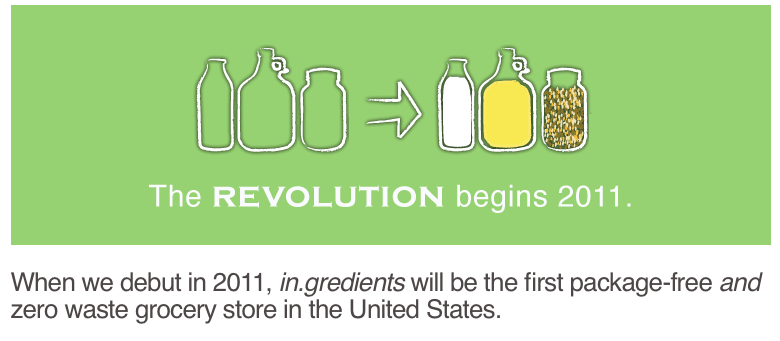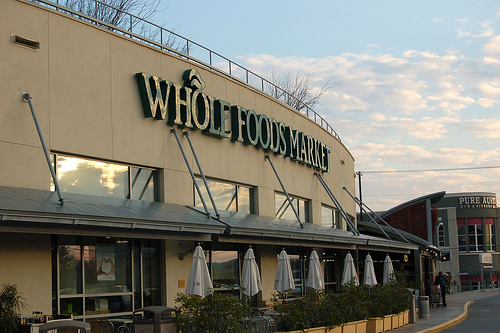
in.gredients <a href="http://in.gredients.com/">website</a>
Austin, Texas, gave birth to Whole Foods, unleashing one of the nation’s most eco-conscious grocery chains. Now, there’s a new kid in town, one that plans to out-green even Whole Foods by being “package-free and zero-waste.” Grocery store in.gredients (yes, all lowercase, like e.e. cummings or bell hooks) is opening later this year and says it will only carry organic or all-natural products that are package-free or “light packaging” AND that are locally grown or sourced. Whew, that’s a lot of requirements! But, it would get rid of wasteful products like Trader Joe’s pears, which come ensconced in their own plastic holder.
As part of its package-free claim, in.gredients will “encourage” shoppers to bring their own containers. But if they forget, the store will provide free compostable, reusable, or recycleable containers for them. One important limitation to remember: “We’ll limit your choices based on what’s in season.” Also, toothpaste will be dispensed by a pump, so BYOT (bring your own tube).
The store sounds like a good idea in theory, but I wonder how expensive it will be in practice. And while locally sourcing a product does help stimulate the local economy, it doesn’t necessarily mean it’s better for the environment. Trucking a bushel of cucumbers across Texas could potentially emit more carbon per cuke than shipping a ton of them on a slow boat from Mexico.
Still, it feels like a sign of the times that in.gredient’s buzz has gotten so many people excited. Even mainstream grocery stores are starting to look seriously at their environmental footprint. Although in.gredients says it will be “the first package-free and zero-waste grocery store in the United States,” Albertson’s has already been experimenting with the no-waste model: two stores in Santa Barbara have successfully gone zero-waste by doing things like recycling more kinds of plastics, sending their cardboard boxes to be turned into fireplace logs, and donating about-to-expire food to food banks. In a recent press release, Albertson’s announced they’d be converting 40 stores to the no-waste model by February 2012. Of course, when you’re talking about grocery stores, it’s hard to find one that’s truly zero-waste. With Albertson’s criteria, stores must keep at least 90% of their waste from going into the landfills (the two Santa Barbara stores diverted about 95%). And besides making Albertson’s look good, the zero-waste plan also saves the chain money. “At the same time, we are committed to these projects because we’ve also seen that they make a positive financial impact on our business, a true win-win,” said Albertson’s executive vice-president Andy Herring.















